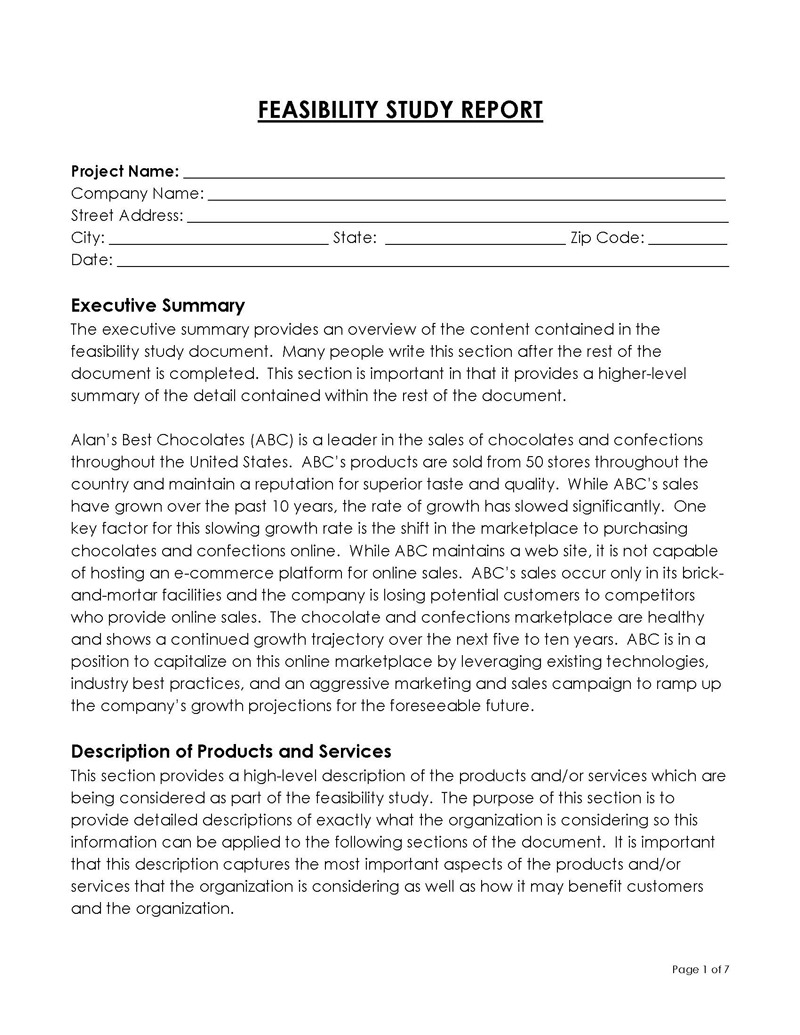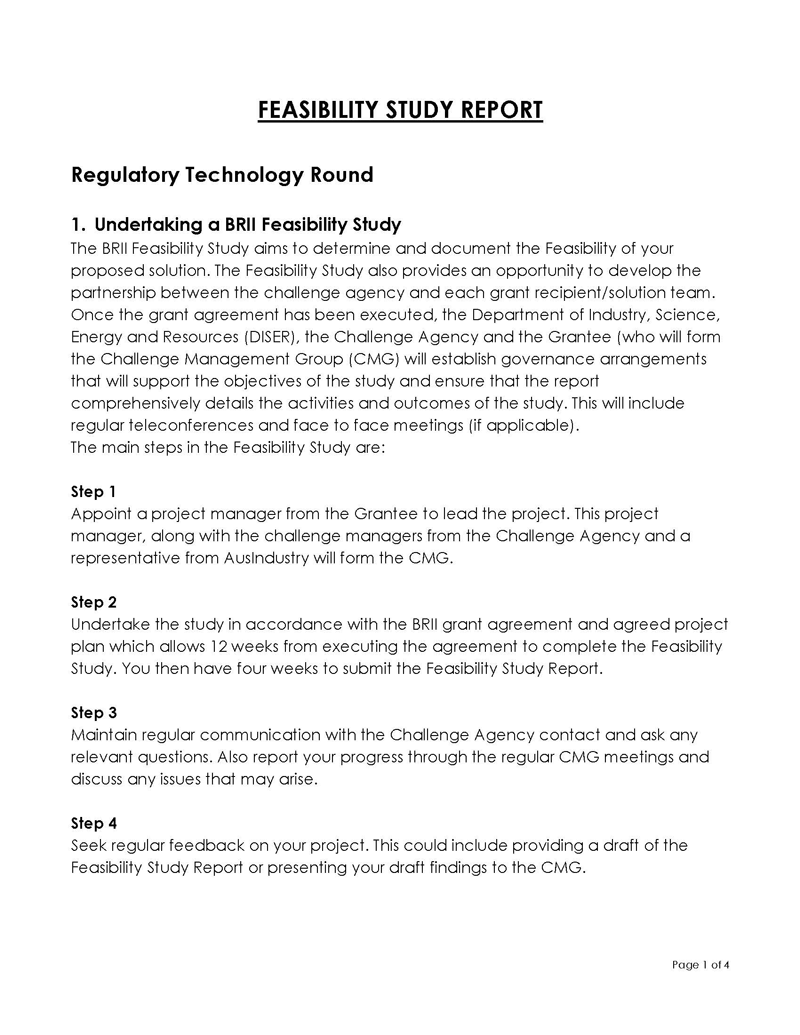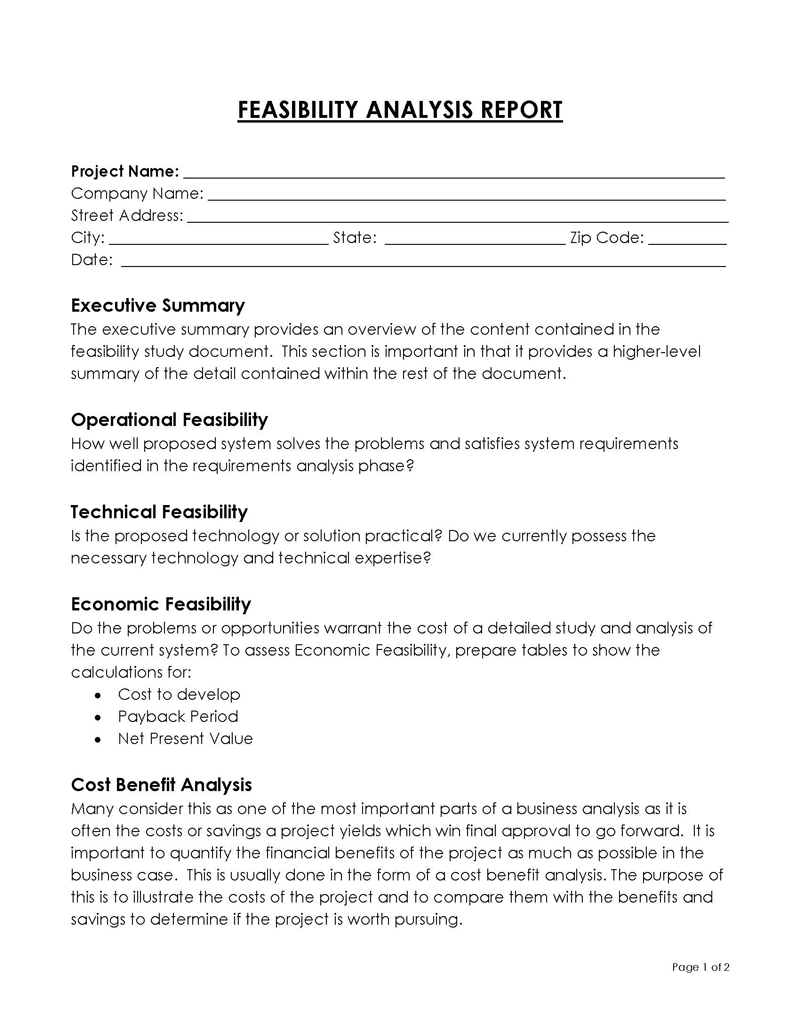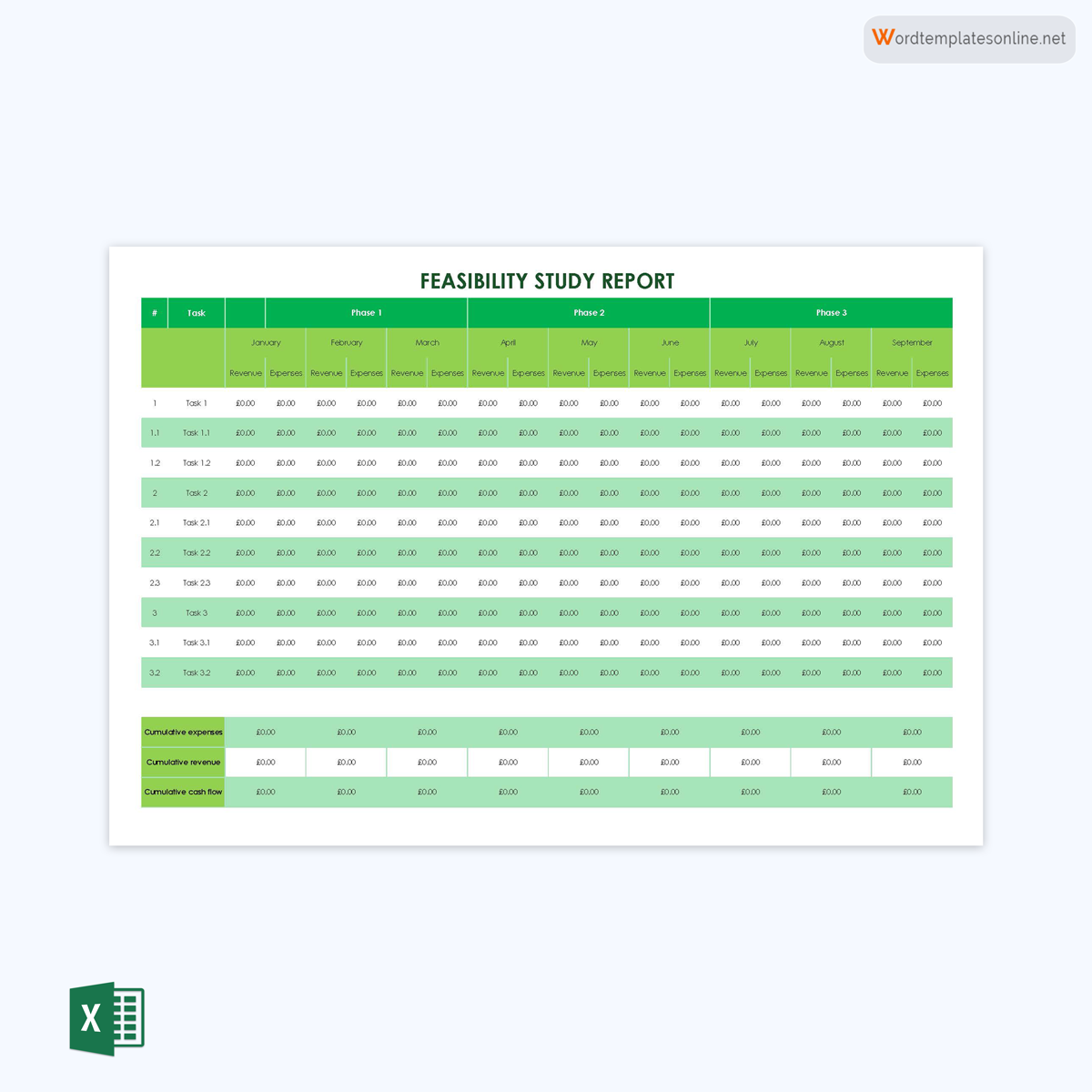A feasibility study is an assessment that examines the viability of a project or idea.
The idea of the study is to answer the question: “Is it feasible?” It can be one part of the process when seeking investment. It often examines the market and other factors, such as competition and infrastructure. It should gather as many inputs as possible from other parties and stakeholders, both internal and external. It is vital to have an exhaustive understanding of the needs of the target market, local government, and other stakeholders who are directly or indirectly affected by the project.
These assessments may consider economic development objectives, business plans, and market studies. They will also include other considerations, such as environmental issues and legal implications, and complementary analyses, such as cash-flow projections and financial ratios. It should not only be confined to feasibility alone but also consider other essential aspects such as sustainability and timeline.
This article will help you understand the considerations, such as the typical benefits of this study, what information is gathered during one, and critical considerations.
What is a Feasibility Study?
It is an analysis to determine if a project is viable or feasible. It is undertaken to ensure that the expected return on investment and risks are worth the investment and that the benefits (direct and indirect) outweigh the costs. The project must meet specific criteria to be determined appropriate for this study.
Feasibility studies are often conducted at the design stage of the project. The objective of it is to determine whether there are enough resources (funds, expertise, and time) and current technology to undertake the project and if the ROI is worth the investment.
Reasons
There are several different types of feasibility studies. The decision to undertake it is based on the need for certainty, the level of resources available, the technology available, and the ability to meet specific technical and financial criteria.
To conduct a feasibility study
The key benefits of undertaking it for a project include providing the investor with enough information to make the right decision. This helps investors avoid potential losses and make the right decision when investing in a project. This way, it can be used to secure funding from investors and banks. As a result, economically feasible projects will always attract investors.
When conducted at the design stage, it mitigates risks associated with executing the project by identifying the pros and cons. It also helps determine whether or not there are factors that could affect the profitability of a project and how to remove or mitigate those threats and risks. Consequently, this increases the chances of success.
This study helps provide the decision-maker with a holistic picture of the project. It helps build an accurate profile of the project and its environment by assessing competition, industry or market position, financial or funding requirement, economic, social, and political factors affecting the project.
It also helps identify and evaluate alternatives and compare them to the proposed project. Assessing alternatives helps identify new opportunities and threats associated with an industry or market.
It can be a one-off or a series of investigations. A one-off feasibility study is conducted to determine if there is sufficient capacity in technology and resources to carry out a particular project at a particular point in time. On the other hand, a series of feasibility studies are conducted to determine if a project is justified and feasible in the short term or long term. The success of it depends on sufficient infrastructure development, technology capability, and general funding (hardware & software) to execute a project.
Not to conduct a feasibility study
There are instances where conducting this study may not be a priority when undertaking a project. For example, the project team will often refrain from undertaking it because the project has already been proven viable, or a market analysis has been conducted.
Other reasons include the study being an expensive process. It can harm the budget and the misconception that feasibility studies are merely consultants’ way of making money. Other teams prefer to hire a general manager to undertake this process.
How Does It Work?
It tends to evaluate the project and its associated risks, both qualitative and quantitative. It is a process that helps a project team develop a thorough understanding of the features of a particular project to achieve an objective appraisal of its viability and feasibility. In this sense, every aspect of the proposed project must be assessed in detail. How do I conduct this study? There are several ways to conduct it.
It can be done by:
- A project team itself or
- Contacting an independent firm that specializes in this area, e.g., engineering consultancy firms, financial consultants
The study measures the ROI depending on the project’s objectives and compares it to the costs of inputs to determine whether the project or venture should be undertaken. This way, the team can identify potential problems from their inception before they become fundamentally embedded within the project design. This is often done through a risk assessment.
Types of the Feasibility Study
Mostly they are based on the type of project being undertaken. The project team must understand what type of study should be undertaken.
Below are the most common types of feasibility studies:
Technical feasibility
It focuses on technical aspects of the project, such as the feasibility of the technology, required supplies, costs, and time to implement. For example, if the project involves using wind turbines to generate electricity, a technical feasibility study would determine whether they can generate enough electricity to meet demand. This type is also known as a techno-economic study.
Financial feasibility
It looks into the financial implications of the proposed project. For example, if a project is being undertaken for the potential to make profits, an economic feasibility study must be undertaken. This process helps determine whether or not an investment would return a profit or not. The results of this process can be used to determine how much funding would be required to run the project and whether or not it is worth pursuing. This will involve a cost/benefits analysis and an ROI assessment.
Market feasibility
This study focuses on market analysis, competition, industry/market drivers, and product-market evaluation to determine if the project will be profitable given specific input parameters. This type of study is used in decision-making when starting a new product or service and determining if an existing product/service should be enhanced, improved, or replaced. This process involves quantifying potential benefits, risks, and other external factors that could influence the demand for a new product or service. In addition, this assessment will involve sales projections, historical data, and consideration of trends.
Organizational feasibility
It looks into aspects related to human resources, people, and organization, such as recruitment, training, etc. It is often used when a business needs to hire new staff or add contractors to meet a project’s objectives. If organizational requirements are met, then the project is feasible.
Feasibility Study Vs. Business Plan VS. Business Case Vs. Project Charter
Feasibility studies are primarily meant to be a risk management exercise that can help identify any potential risks associated with a project as well as help to assess whether or not the resources are available to execute the project.
Feasibility study vs. business plan
A business plan is an official document that describes the characteristics of a particular business and its operations and future goals.
A business plan can extend both a business strategy and core business model. The main difference between a feasibility study and a business plan is that the latter is often used when seeking funding for a specific project/venture or if an entrepreneur wants to set up their own company.
Feasibility study vs. business case
A business case is a document that provides financial or project details about an investment.
Next, a business case is used to pitch a project to executive stakeholders. It will thus precede a feasibility study. Finally, a business case is used to obtain approval. The main difference between them is that a business case tends to focus on the business aspects of the project, such as strategy, risks, etc.
Feasibility study vs. project charter
The project charter is a relatively less formal document that defines the purpose and objectives, the customer or stakeholders, and how the company will achieve its goals.
The purpose of a project charter is to provide management with essential information regarding business objectives, deliverables, and timelines to achieve those goals and make decisions about managing the projects effectively.
A feasibility study is a form of pre-project work that identifies the various aspects of a project proposal and defines the business requirements. It thus succeeds the project charter to determine if the set objectives can be accomplished.
Components of a Feasibility Study
Below is a list of different components of it. A project team must understand these components as they would be required to plan the project:
Executive summary
The executive summary describes the overall project and presents the key points of a project, such as the objectives, deliverables, action plan, etc., in a narrative format. Therefore, it should be brief but conclusive on what the project entails.
Description of the product/service
A product or service description is a general overview of how the product/service will meet customer demands. It also describes any features specific to the product/service that create value in the project’s end product. This component also focuses on user needs and end-user satisfaction.
Technology considerations
A technology assessment involves determining all the technical criteria that must be met for the project to be feasible. This will include the latest technologies, such as internet and mobile networks, state-of-the-art software tools, best practice information security, etc.
Product/service marketplace
The marketplace is large enough to support the sale of the product/service. A market assessment helps determine all the elements that will influence the demand for the new product, work out potential customers, and assess whether or not there are sufficient numbers to meet sales targets.
It also covers whether or not this product is similar to other products in the market. This assessment also looks into how the project team will manage competition and pricing. This includes any barriers to entry, competition, market trends, marketing strategy, etc.
Identification of the specific market
The specific market is the group of people that will be able to benefit from the project. This might be a geographic or demographic market segment or customers based on their needs. A specific market segment can also be broken down into smaller segments with similar needs. This section is based on research and information gathered from other focus groups, surveys, primary and secondary research, etc.
Marketing strategy
A marketing strategy is a set of action plans used to promote a new product. It also determines the overall marketing mix and how they will use each tool to market their product. It also covers how they will address any barriers to entry into the market, manage competition, and plan to use price, place, and promotion in the marketing mix. This section also focuses on specific promotional campaigns such as viral, customer loyalty programs, and customer feedback channels.
Organizational structure
The organizational structure relates to the management people who will be managing the project. This section also identifies the roles/responsibilities of each role, key personnel in each role, and project stakeholders. This section is a detailed list of all workforces required to successfully deliver on the objectives and deliverables mentioned in the project plan. This section also describes how these people will be recruited, training programs, job descriptions, etc. The team may include experts, consultants, suppliers, contractors, and core team members.
Schedule
A project schedule lists key milestones at which project deliverables are expected to be attained. It also includes all of the tasks required to implement the project plan and is used to monitor and control the project’s progress. A schedule is created based on all activities, dependencies, risks, and the critical path identified during the risk analysis phase. This study is meant to determine if the project schedule is practical.
Financial projections
This is the final component as it determines the project’s viability and identifies critical issues that may affect the project. This section analyses factors that influence cost, revenue potential, and cash allocation, including product pricing, sales volumes and revenue models, market development budgets, and government grants. The financial projections are based on various assumptions used to calculate the overall profitability of the new product.
Feasibility Study Templates
A template helps write the feasibility study, which is a document describing the feasibility of an idea, program, or project. It includes key sections for identifying the problem and goal, environmental analysis, and data collection plan.




Steps for Conducting a Feasibility Study
There are different steps in which this study is carried out, each essential in providing support for the various components of the study.
Below is an overview of the steps involved in conducting it:
Conduct preliminary analysis
The first step in conducting it is to conduct preliminary analysis. This step will involve analysing proposed alternatives and narrowing them down to one or two alternatives. The prioritized alternatives can then be subjected to a more in-depth feasibility study. This step should be considered exploratory and should not be confined to stringent criteria.
Prepare income statement
The income statement is an accounting document that details the company’s financial performance. It includes a cash flow projection, balance sheet, and statement of other comprehensive income. A projected income statement should provide details on the company’s projected costs, taxes, revenues, and net income. A projected income statement should be referred to when determining financial viability.
Perform market survey
To evaluate the commercial viability, a market survey must be performed. A market survey provides information on how the company’s product is marketed, what the competition is doing, and how people perceive the new product. The resource of most companies is their products and services. The market survey identifies potential customers and assesses whether or not there are sufficient numbers to meet sales targets. It also covers whether or not this product is similar to other products in the same industry.
Plan organizational structure
The company’s organizational structure will determine how the project will be carried out and what roles people will perform. This study should assess the staffing requirements of the project, like the number of supervisors, level of expertise needed, equipment, compensation, timeframe, etc.
Prepare an opening day balance
The opening day balance is a list of all the components that will need to be accounted for on the first day of operations. The opening balance should include amounts to be received from investors and creditors. The study should determine how much money will be needed daily to sustain operations.
Review and analyse
This study reviews and analyses the strengths and weaknesses of the project through a risk assessment or SWOT analysis. Each internal factor and component of the project should be analysed based on its impact on the company’s future goals. A sensitivity analysis can also be conducted to understand how things will change if specific parameters change. Sensitivity analysis helps determine whether or not certain factors are crucial for the project’s success.
Decide whether to go/no go with the plan
Whether to proceed with the project depends on various factors, including financial viability, environmental issues, threats and risks, projected costs and revenues, timetables for implementation, and future goals. The market features that have been assessed must be able to provide a decision.
Key Takeaways
- A feasibility study should assess the economic, political, technological, social, legal, and environmental factors that affect the practicability of the project.
- The study is usually conducted at the earliest stages of a project and is used to determine whether or not the project is viable. However, it can be undertaken at any stage of a project cycle before implementing a significant decision or project.
- The analysis of alternative concept seeks to compare the potential profitability and payback period of several alternative courses of action. This kind of analysis is used when a decision has to be taken as to which course of action to take (or whether to take any). The result is not a simple yes/no answer but an answer indicating the relative attractiveness of the courses of action compared with each other.
- It should be carried out by a team of people who have experience and knowledge in project planning and management.




